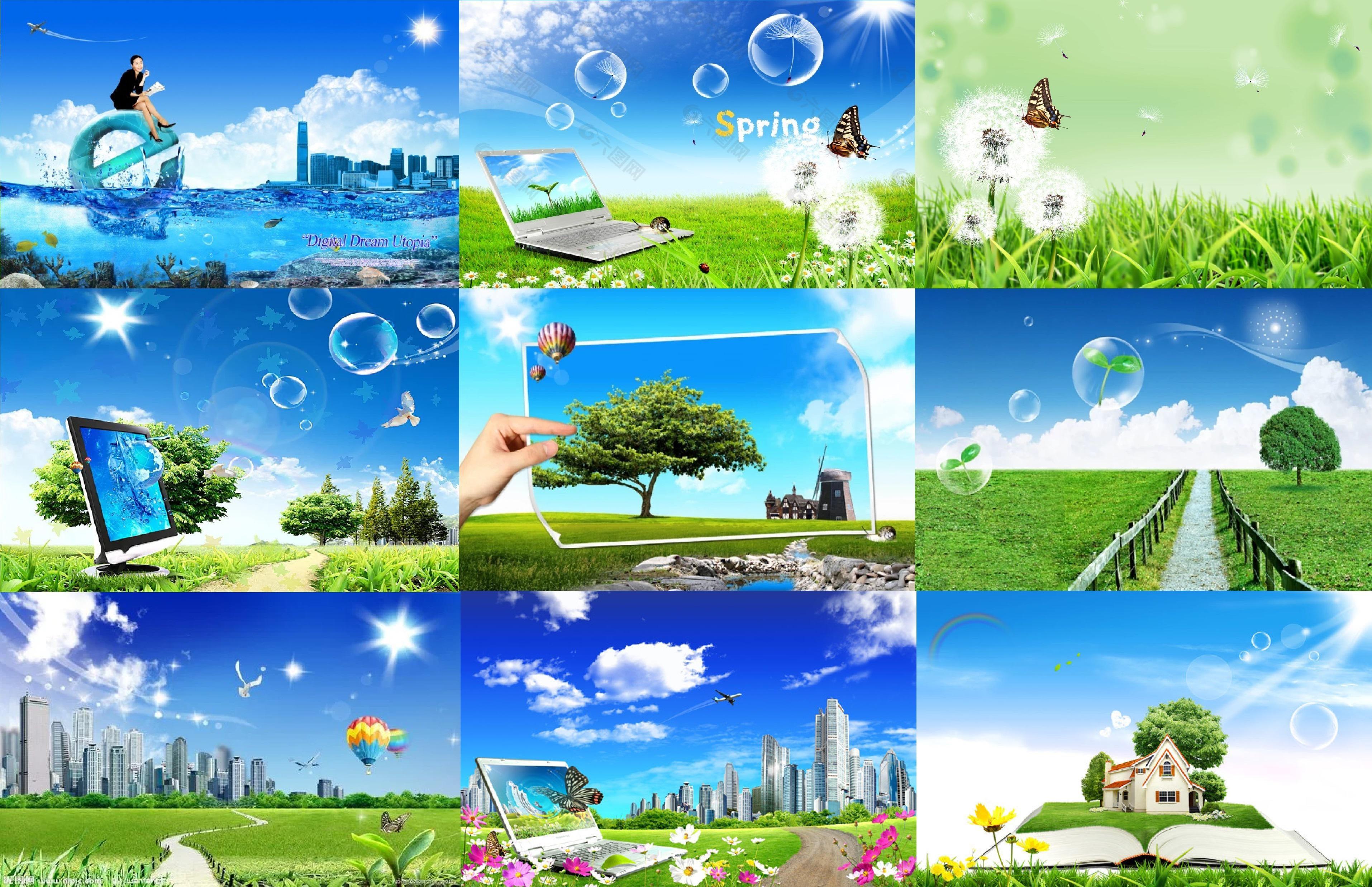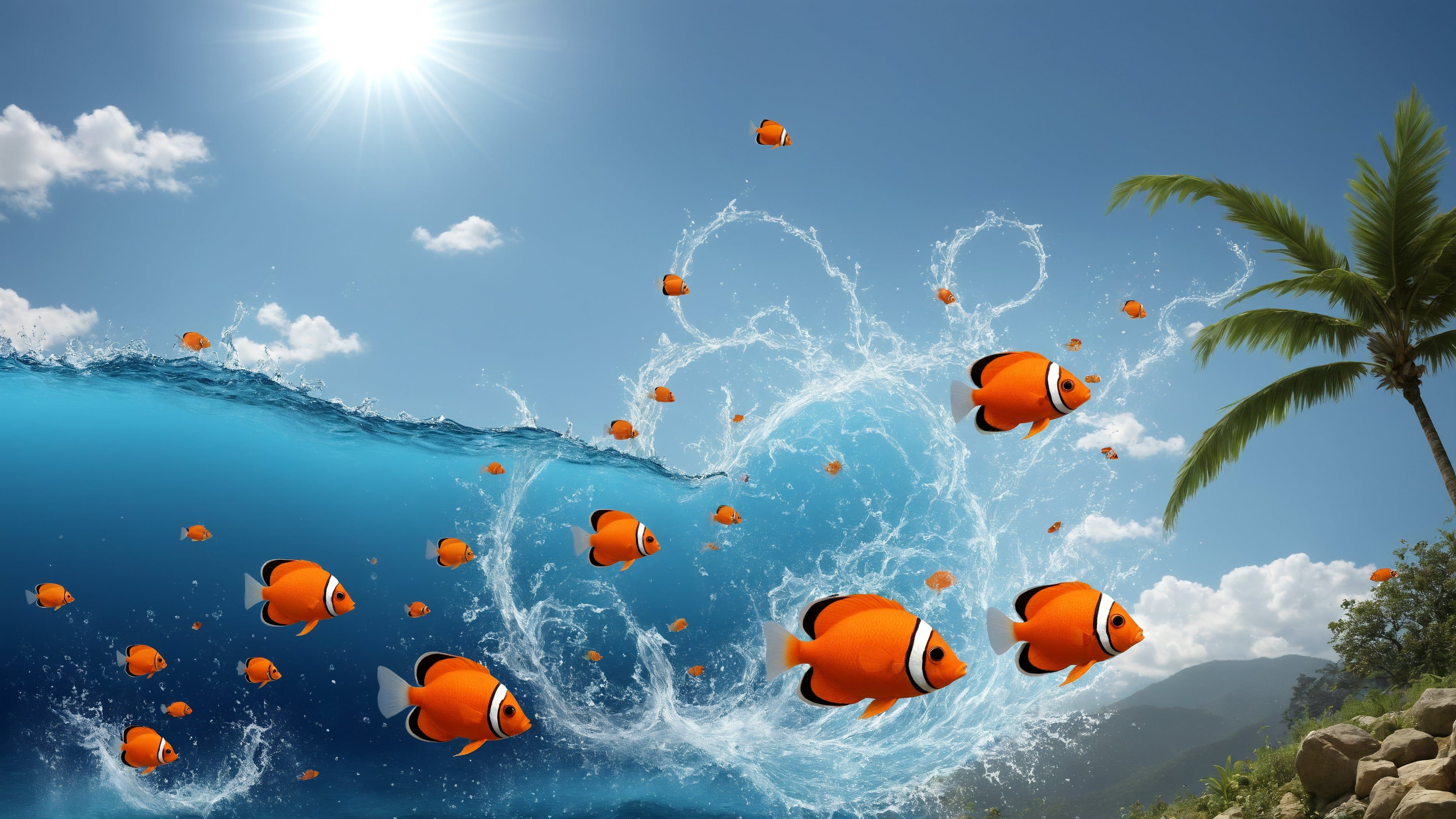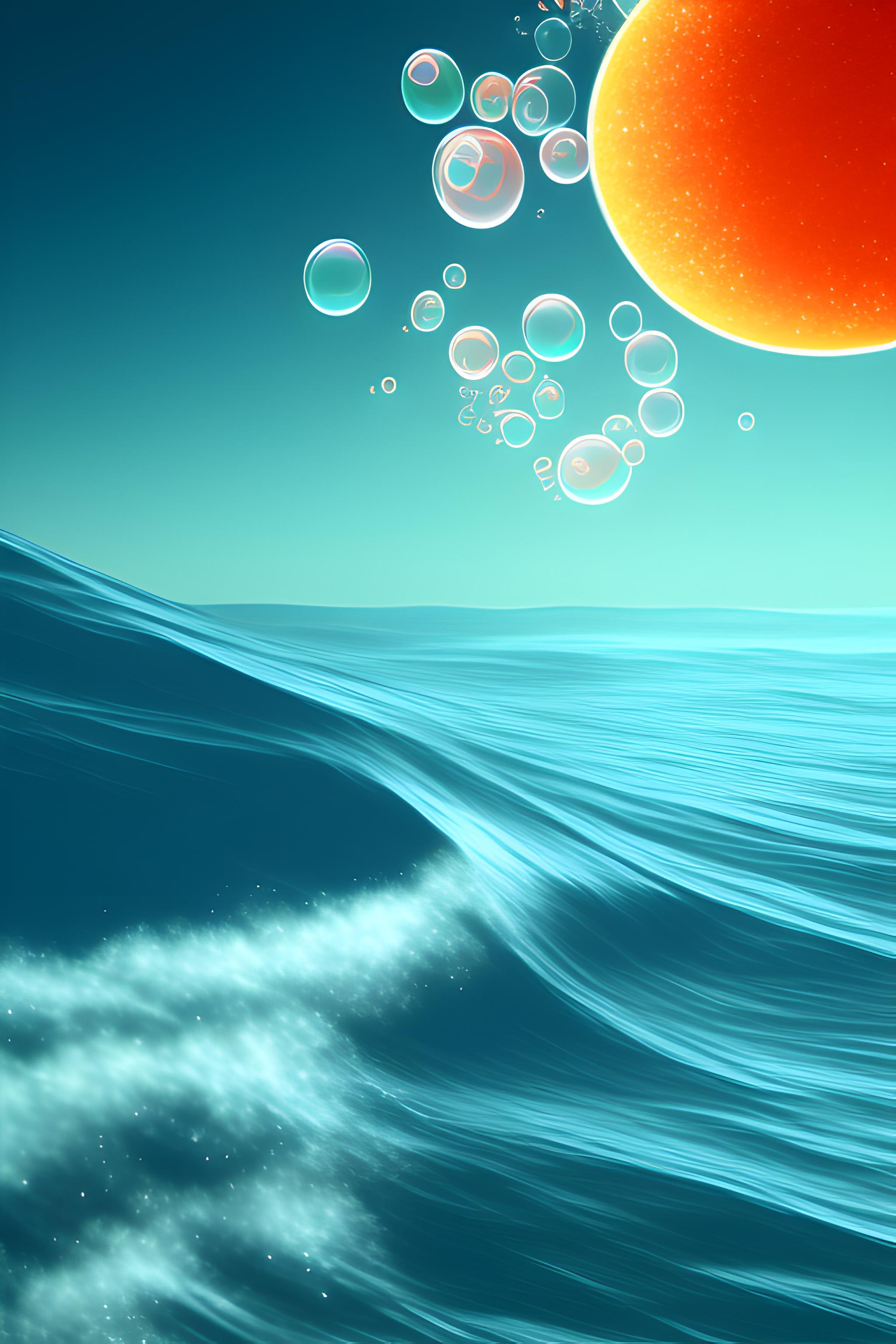It seems like everywhere you look online, people are wondering: is Frutiger Aero coming back? This particular visual style, with its glassy surfaces, vibrant colors, and bubbly elements, holds a special place in the hearts of many who grew up with early 2000s technology. It really feels like a distinct period in digital design, and for some, it brings a real sense of comfort and familiarity.
For quite some time, our digital world has leaned heavily into very flat, minimalist looks. Everything is clean, often stark, and very, very simple. But lately, there's been a noticeable shift, a quiet yearning for something different, something with a bit more personality and depth. This is, you know, where the conversation about Frutiger Aero begins to bubble up again.
The question isn't just about whether a design trend is making a return; it’s about what that return might say about our collective mood and what we seek from our digital experiences. Perhaps, in a world that sometimes feels a little too serious or too streamlined, we’re looking for a bit of that playful, optimistic glow that Frutiger Aero once offered. It's almost as if we're reaching back for a time when technology felt more exciting and less demanding.
Table of Contents
- What Exactly Is Frutiger Aero?
- Why Now? The Pull of Nostalgia
- Where We See It Today
- Looking Ahead: Is It Here to Stay?
- Frequently Asked Questions
- Conclusion
What Exactly Is Frutiger Aero?
When people talk about Frutiger Aero, they're referring to a visual style that really took off in the mid-2000s. Think about those glossy buttons, the watery reflections, and the vibrant, almost optimistic color palettes. It's a look that often includes elements of skeuomorphism, meaning digital items try to look like real-world objects, like shiny glass or actual buttons you could press. This style, you know, has a certain kind of depth and texture that feels quite different from what we see in most designs today.
The name itself, Frutiger Aero, actually gives us a big clue about where it comes from. It gets its first part from the Frutiger fonts, which were designed by a very well-known person named Adrian Frutiger. These fonts, it turns out, were a big source of ideas for the Segoe UI fonts, which you might recognize from Windows. The "Aero" part comes from the visual design and user experience guidelines that Windows used during that time. So, it's a blend of font inspiration and specific software design choices, which is, you know, pretty cool.
This style really aimed for a sense of realism and polish. It often featured soft gradients, glowing lights, and a lot of transparency, giving things a somewhat airy or floating feel. It was, in a way, a visual representation of progress and a step away from the simpler, more basic interfaces that came before it. You could say it represented a time when computers felt more like exciting, futuristic machines rather than just tools.
Why the Look Feels Familiar
If you used a computer around the Windows Vista or Windows 7 era, then the Frutiger Aero look is probably very familiar to you. That was the time when these visual ideas were front and center in how our operating systems looked and felt. There were translucent windows, shiny icons, and a general feeling of depth on the screen. It was a period where software tried to look more like physical objects, like glass panels or light-up buttons, which, you know, made things feel a bit more tangible.
The visual language of Windows Aero, with its glassy effects and live previews, really set the tone for many digital experiences back then. It was about making the computer feel more approachable and, in a way, more fun to use. The design choices were meant to be intuitive, giving a clear sense of what was interactive and what was just background. It’s almost like the screen was a window into another space, rather than just a flat surface.
And it wasn't just operating systems. Many websites and applications from that time adopted similar visual cues. You'd see buttons with subtle reflections, backgrounds with soft glows, and interfaces that felt like they had a bit of a curve or a bubble to them. This widespread use means that for a whole generation, this aesthetic is deeply tied to their early experiences with personal computing, which is, you know, a very strong connection.
The Roots of Frutiger
The "Frutiger" part of Frutiger Aero comes from the Frutiger font family, which has a fascinating history. This font is from the sans serif group, which means it doesn't have those little decorative strokes at the ends of its letters. It was originally created for the signage system at the Charles de Gaulle Airport in Paris. This was a really big project, and the airport, you know, needed a typeface that was super clear and easy to read from a distance.
Adrian Frutiger, the person who designed this font, was actually quite famous for another font family he created called Univers. Many people thought he would just use Univers for the airport project. However, Frutiger decided instead to make a brand new sans serif typeface that would be just right for the very specific needs of airport signs. This decision shows how thoughtful he was about the purpose of his designs, which is, you know, pretty inspiring.
The Frutiger font is very well-known for its clarity and how easy it is to read. It also has what people call "humanist qualities," meaning it feels a bit more natural and less mechanical than some other sans serif fonts. This makes it really suitable for things like print materials, where legibility is key. It was first asked for in 1968 by the newly built Charles de Gaulle International Airport at Roissy. Today, it’s very adaptable and often shows up in signs, digital interfaces, and even in how companies present themselves. You can actually download and install free Frutiger font family versions, and it's available at places like Dafont Free and FontsGeek.com, where you can view sample text and ratings, which is, you know, pretty convenient for anyone interested.
Why Now? The Pull of Nostalgia
So, why is everyone suddenly talking about Frutiger Aero again? A big part of it, honestly, comes down to nostalgia. For many people, this aesthetic reminds them of a simpler time, perhaps their childhood or teenage years, when the internet was still relatively new and exciting, and technology felt full of promise. There's a certain warmth and optimism tied to those early 2000s visuals that current, very sleek designs sometimes lack. It's almost like a comforting memory, you know, surfacing again.
Think about how trends often move in cycles. After a long period of one dominant style, people naturally start to look for something different. We've been living in a world of flat design for quite a while now, where everything is very minimal, often just lines and simple shapes. While that has its own kind of beauty, it can also feel a bit sterile or impersonal. The human mind, you know, sometimes craves a bit more texture, a bit more visual interest, something that feels a little less serious.
This desire for something different, something with more personality, often leads us back to past styles. Frutiger Aero, with its playful elements, its reflections, and its vibrant colors, offers a stark contrast to the flat, often muted designs we see everywhere today. It's a visual language that speaks to a different era, one that many remember fondly. So, in a way, it's not just about the look itself, but about the feelings and memories it brings up, which is, you know, quite powerful.
A Shift from Flat Design
For the past decade or so, flat design has been the king of the digital world. Think about the clean lines, the simple icons, and the general lack of shadows or textures. This style became popular for good reasons: it loads fast, it looks clean, and it's easy to adapt to different screen sizes. However, after seeing it everywhere for so long, some people are starting to feel a bit tired of it. It can sometimes feel a little too generic, a bit too cold, or just not very exciting, which is, you know, a common sentiment.
Frutiger Aero offers a complete change of pace. Instead of flat, it's about depth. Instead of simple, it's about rich textures. It brings back those glassy effects, the gradients, and the subtle glows that were so popular before. This shift isn't just about looks; it's about a different feeling. Flat design often feels efficient and quiet, while Frutiger Aero feels more expressive and, in a way, more human. It’s almost like going from a very quiet room to one filled with interesting sounds and sights.
This desire for more visual richness and personality is driving a lot of interest in older aesthetics. People are looking for something that stands out, something that has a unique character. Frutiger Aero, with its distinctive visual language, fits that bill perfectly. It's a style that evokes a particular mood and era, and that uniqueness is very appealing right now. It suggests that people are ready for more visual flair in their digital lives, which is, you know, a pretty interesting development.
Where We See It Today
While Frutiger Aero might not be making a full-blown comeback as the dominant design style for major operating systems or websites just yet, its presence is definitely growing in other areas. You can see hints of it, or sometimes full-blown homages, in various corners of the internet and in creative projects. It's almost like a quiet resurgence, a subtle nod to a past aesthetic that's finding new life in unexpected places, which is, you know, pretty cool.
One place where it's quite visible is in personal digital spaces. People are customizing their computer desktops with Frutiger Aero themes, using wallpapers that feature those signature blue skies, green hills, and water droplets. They're also finding old icons and cursors to bring that mid-2000s feel back to their everyday interactions. This kind of personal expression shows a real fondness for the style, and it suggests a desire to reclaim a bit of that older digital charm.
Beyond personal customization, you'll also spot Frutiger Aero influences in certain artistic projects, especially those that play with nostalgia or explore digital history. Some artists are using its visual language to create new pieces that comment on technology, memory, or the passage of time. It's a way of engaging with the past, but with a fresh perspective, which is, you know, quite clever. This indicates that the style isn't just a forgotten relic but a source of ongoing creative inspiration.
Online Communities and Creators
A significant driving force behind the renewed interest in Frutiger Aero comes from online communities. Platforms like TikTok, Reddit, and Tumblr are buzzing with discussions, image shares, and creative works dedicated to this aesthetic. People are sharing examples of old software, creating new art that mimics the style, and even making videos explaining its history and appeal. This kind of grassroots enthusiasm is really what keeps a trend alive and growing, which is, you know, pretty remarkable.
Content creators play a big part in this. Many designers, artists, and tech enthusiasts are making videos, blog posts, and social media content that explores Frutiger Aero. They're showing off how to recreate its looks, discussing its cultural impact, and sharing their own nostalgic feelings about it. This creates a feedback loop where more people learn about the style, get inspired, and then contribute their own creations, which is, you know, quite a dynamic process.
These communities aren't just passively observing; they're actively shaping the conversation around Frutiger Aero. They're defining what it means today, adapting it for modern contexts, and ensuring that its unique visual language remains relevant. It's a testament to how powerful collective interest can be in bringing back and reinterpreting past trends. So, in a way, the internet itself is acting as a catalyst for this aesthetic's return, which is, you know, pretty fitting given its digital origins.
Looking Ahead: Is It Here to Stay?
The big question, of course, is whether Frutiger Aero is just a passing wave of nostalgia or if it has the potential to truly influence mainstream design again. While it's unlikely that major operating systems will completely abandon their current minimalist approaches overnight, the growing interest in Frutiger Aero suggests a broader shift in what people are looking for from their digital experiences. It's almost like a subtle rebellion against the very sleek and often uniform look we've grown used to, which is, you know, quite interesting.
We might see more designers and brands incorporating elements of Frutiger Aero into their work, perhaps as a way to stand out or to evoke a certain feeling of retro-futurism. This could mean more depth, more vibrant colors, or more playful textures in user interfaces, apps, or even marketing materials. It won't necessarily be a full return to the past, but rather a modern interpretation of those beloved elements. This kind of blending of old and new is, you know, quite common in design cycles.
Ultimately, the longevity of Frutiger Aero's resurgence will depend on how designers and the public continue to engage with it. If it continues to inspire new creative projects and if people keep expressing a desire for more visually rich and distinctive digital experiences, then its influence will likely grow. It could be that we're moving towards a more diverse design landscape, where different aesthetics coexist and cater to different tastes, which is, you know, a pretty good thing for everyone.
Frequently Asked Questions
Here are some common questions people have about Frutiger Aero:
What exactly is Frutiger Aero?
Frutiger Aero is a design aesthetic that was popular in the mid-2000s, known for its glossy, translucent, and skeuomorphic elements. It features vibrant colors, reflections, bubbles, and a sense of depth, often seen in Windows Vista and Windows 7 interfaces. It gets its name from the Frutiger font family and the "Aero" visual guidelines of Windows, which is, you know, pretty straightforward.
Why are people talking about Frutiger Aero again?
People are talking about Frutiger Aero again largely due to nostalgia for the early 2000s and a desire for a change from the current minimalist and flat design trends. It offers a distinct visual style that evokes a sense of optimism and playfulness, which, you know, many find appealing after years of very simple interfaces.
Is Frutiger Aero just a passing trend?
While it's hard to say for sure if Frutiger Aero will become a dominant mainstream style again, its current resurgence is driven by strong online communities and a desire for more diverse aesthetics. It might not fully replace current design trends, but it could certainly influence future designs by bringing back more depth, texture, and vibrant elements, which is, you know, a good possibility.
Conclusion
The conversation around whether is Frutiger Aero coming back really shows how much we connect with visual styles from our past. This aesthetic, with its glossy surfaces, vibrant colors, and clear, humanist fonts like those designed by Adrian Frutiger for places such as the Charles de Gaulle Airport, truly defined an era of digital experience. It's a look that brings up feelings of optimism and a certain kind of digital charm that many people miss in today's very flat and minimalist world.
The current interest, fueled by online communities and a collective yearning for something different, suggests that while a full, exact return might not be on the cards, its influence is certainly growing. We might see more elements of Frutiger Aero appearing in new designs, bringing back some of that depth and visual richness. It’s a testament to how powerful nostalgia can be in shaping our tastes and what we look for in our digital lives. So, keep an eye out for those bubbly, reflective surfaces and clear typefaces; they might just be popping up more often than you think.
To really get a feel for the roots of this style, you might want to learn more about the Frutiger font family and its history. You can also discover more about this design aesthetic on our site.



